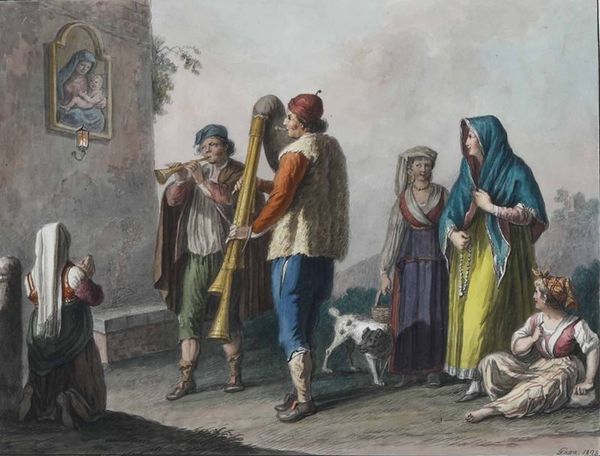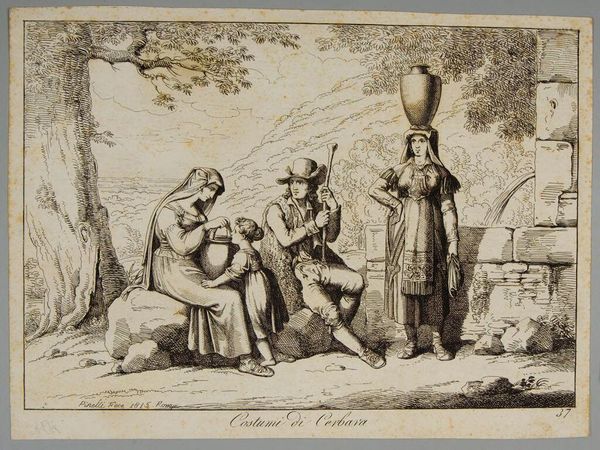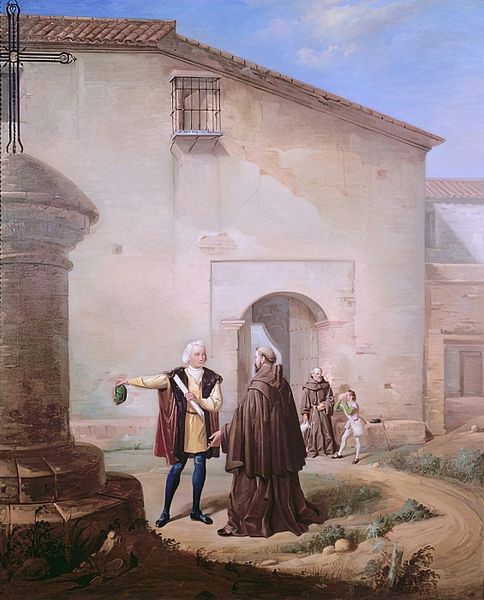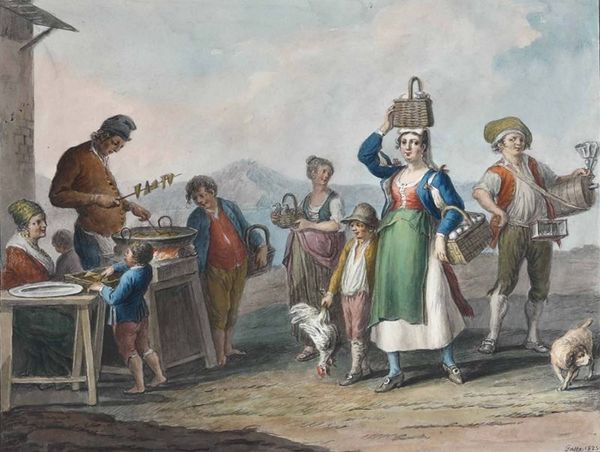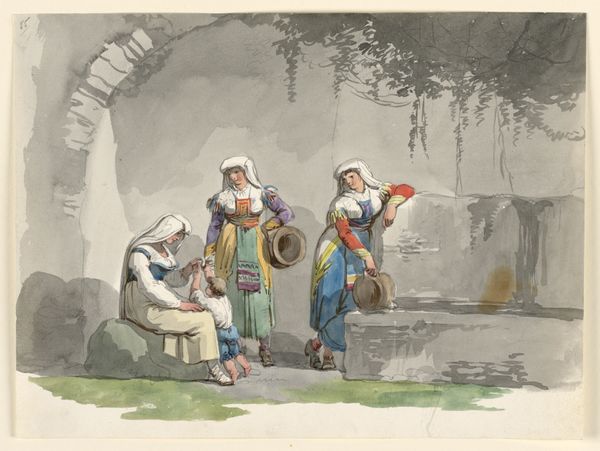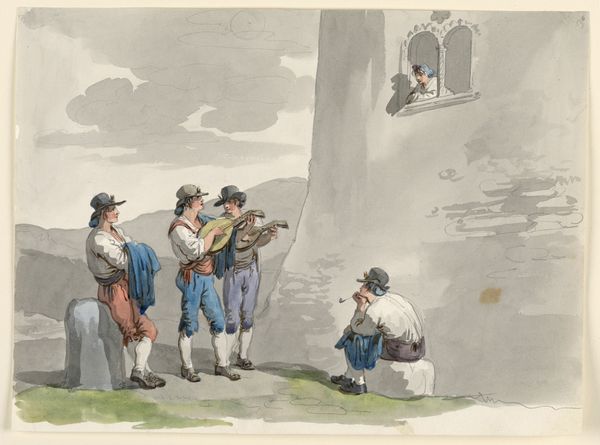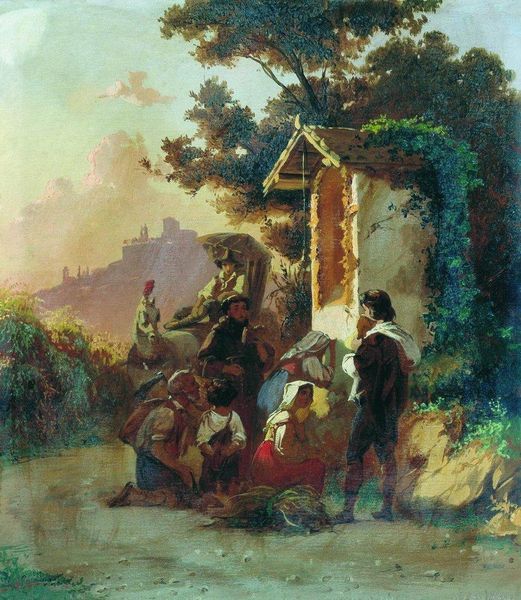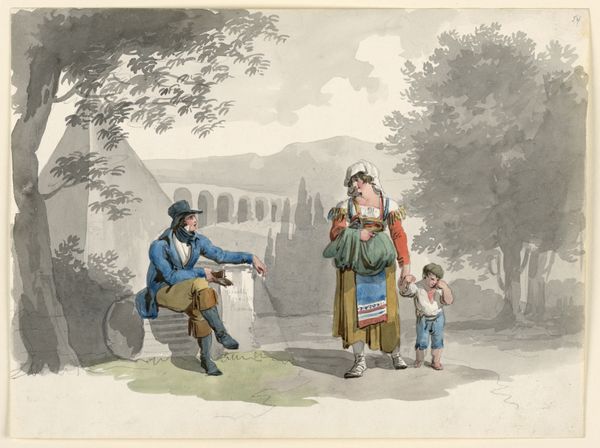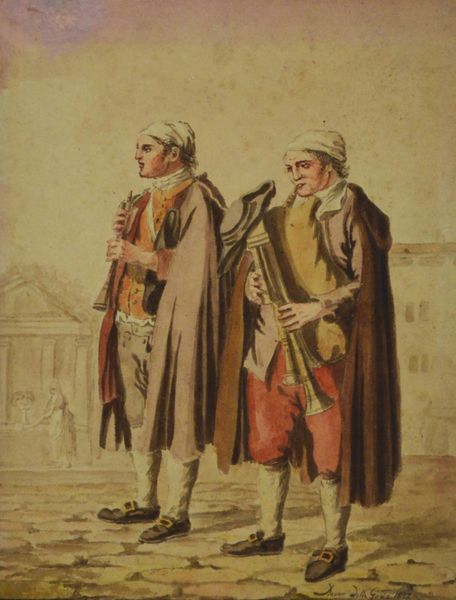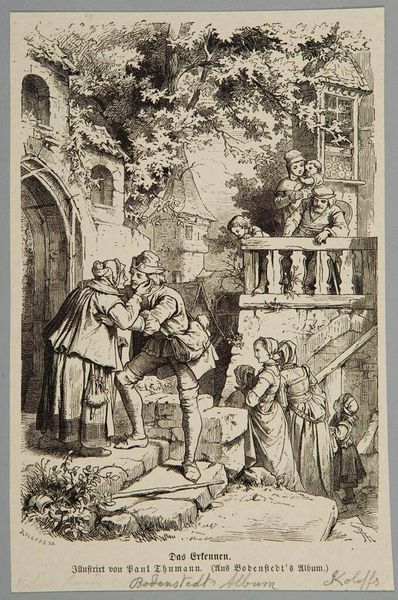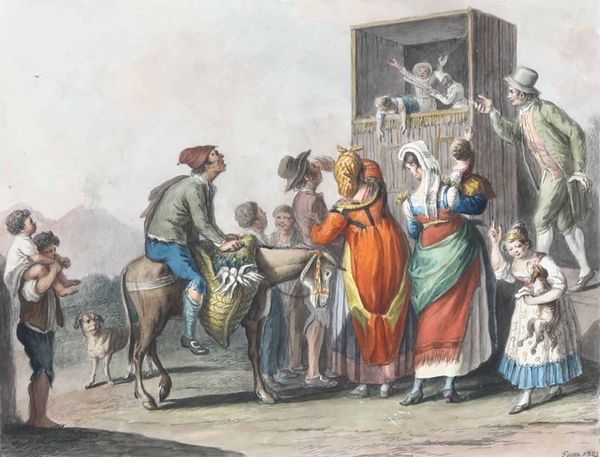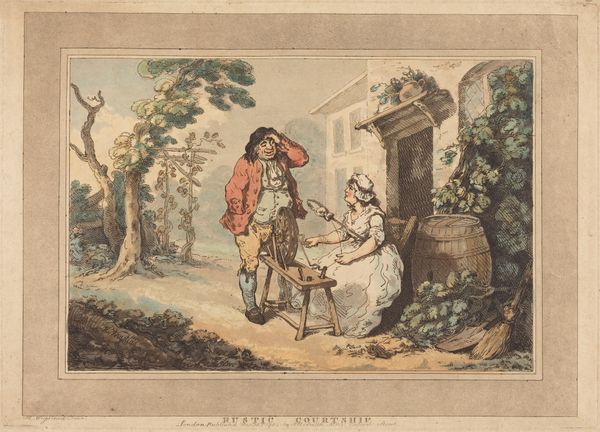
plein-air, watercolor
#
plein-air
#
landscape
#
figuration
#
watercolor
#
coloured pencil
#
romanticism
#
costume
#
watercolour bleed
#
watercolour illustration
#
genre-painting
#
italian-renaissance
#
italy
#
watercolor
Copyright: Public domain
Editor: Achille Pinelli’s watercolor, "The Pipers in Rome," painted in 1831, depicts a street scene with musicians and a praying woman. The composition is charming but almost feels staged. What is your interpretation of the relationships formed by the arrangement of these figures and the architecture? Curator: I agree the piece possesses a contrived quality, an artifice crucial to its formal success. The architecture and the figures, rather than offering an accurate depiction of Rome, act as formal elements that structure the composition. Observe how the verticality of the wall, the trees, and the figures counterpoints with the receding planes of the landscape in the distance. This division emphasizes the pictorial flatness. The color palette contributes as well. Do you see how the earth tones of the buildings echo in the costumes? Editor: I do. It’s interesting how the palette and positioning create these echoes. The praying figure acts as a visual counterpoint to the musicians. Is her presence just to give contrast to the sounds, or is there some other resonance you find? Curator: While anecdotal interpretation may seek religious subtext, from a purely formal standpoint, her posture is the focal point for an arrangement of horizontals and verticals. The muted tones of her garb stand out sharply, in contrast to the melodic flourish found within the two figures and echoed against the landscape behind them. What do you observe about the brushwork? Editor: There's a delicate quality. The watercolour hasn't been overworked; the colours are soft and blended rather expertly in areas but distinctly applied, which creates separate space that the three figures and the kneeling women embody together in real space. It seems designed to make us think about these juxtapositions of plane. Curator: Precisely. The visible brushstrokes do more than define the image; they contribute to the overall aesthetic effect, reminding us of the artist's hand and the constructed nature of the scene. This piece makes one think about what constitutes a landscape, what is real versus simply represented. Editor: Thinking about this painting simply as arrangements of form and colour has provided a fresh view on what is real in landscape. Curator: I’m glad this new appreciation on Achille Pinelli’s composition was mutually educational.
Comments
No comments
Be the first to comment and join the conversation on the ultimate creative platform.
